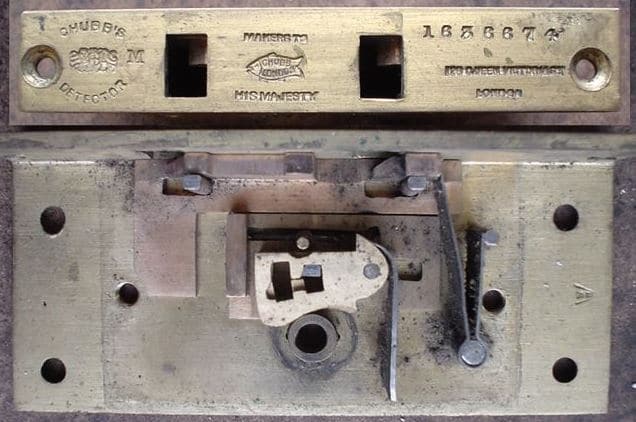The pursuit of lock-picking is as old as the lock, which is itself as old as civilization. But in the entire history of the world, there was only one brief moment, lasting about 70 years, where you could put something under lock and key—a chest, a safe, your home—and have complete, unwavering certainty that no intruder could get to it.
This is a feeling that security experts call “perfect security.” Since we lost perfect security in the 1850s, it has remained elusive. Despite tremendous leaps forward in security technology, we have never been able to get perfect security back.
Locks go back at least as far as ancient Egypt (though perhaps originate in ancient Mesopotamia). From the Middle Ages on for hundreds of years, locks were not very good. The best that locksmiths could do was add features like false keyholes that might at best might confuse a trespasser.
But everything changed in 1770s with the arrival of an inventor named Joseph Bramah to the English locksmithing scene. Bramah was a polymath engineer who would come to be known as one of the fathers of pneumatic power. But he also applied his talents toward improving locks. He created a lock that was vastly superior to any the world ever seen. His so-called Bramah safety lock had layers of complexity in between the key and the deadbolt that Bramah believed made it 100 percent theftproof. Bramah was so confident in his design that he published a pamphlet detailing exactly how it worked.
Bramah had another idea that would revolutionize locksmithing—turning it into a contest. As soon as he had a padlock version of this lock that he felt confident in, he put it in the window of his London storefront, and painted on it a challenge in 1777 offering 200 guineas (about 20,000 pounds or $30,000 today) for anyone who could make an instrument capable of picking the lock. Many people tried to crack Bramah’s challenge lock, but no one, not even with his or her own tools, could get it open.
Bramah’s new unbeatable lock—and the hoopla surrounding it—caught the attention of the British crown. The British government wanted to up the game; it wanted a lock that wouldn’t just be unbreakable, but would also alert the owner if someone tried to open it. Another locksmith named Jeremiah Chubb met that challenge with his Chubb detector lock. The government awarded Chubb 100 pounds ($147) for his innovation.
For years, the names Chubb and Bramah were all but interchangeable with “perfect security”—but only until the Lock Controversy of 1851.
In 1851, London was hosting the Great Exhibition—the first international exhibition of manufactured products. One of the attendees was A.C. Hobbs, an American locksmith. Back in the States, Hobbs had made a name for himself by showing bank managers that their locks could be easily picked and convincing them to buy one of his. Hobbs was selling lots of locks this way. On the first day of the exhibition, Hobbs publicly announced that he would pick the Chubb detector lock—the one that stops working if you pick it incorrectly.
A witness wrote that it took Hobbs about 25 minutes. And the way Hobbs did it was to use the lock against itself. He would pick it until he tripped the detector mechanism, causing the lock to seize up. That would give Hobbs information about how it worked, and then he would pick the lock in the opposite direction to reset the detector. He’d go back and forth firing and resetting the detector until the lock told him everything he needed to know about how to get it open.
But the Chubb detector lock was really just a warmup. The main event was the Bramah safety lock—the one with the challenge painted on it in gold lettering, which had been sitting Bramah’s storefront window for 70 years, unbeaten, taunting lock pickers everywhere.
Hobbs threw down the gauntlet. Bramah had died by this point, and his sons were running his shop. They gave Hobbs a room above the store where could stay for 30 days while he worked on the lock. He was allowed to set it up however he wanted and use all his own tools. Monitors came to check in on him periodically. After working on the lock for about 52 hours over the course of 14 days, Hobbs opened the Bramah safety lock. Overnight, the feeling of perfect security had evaporated. And we have never gotten it back.
Locksmiths weren’t able to convince the public that perfect security could be restored, but they did keep inventing new locks. One such locksmith was Linus Yale Jr. You have probably seen present-day locks with the name Yale on them—that’s because Yale’s company was able to mass-produce its locks at a scale that no one had before. The design was called “pin and tumbler”—it became the world’s most common lock, and they are still made today. It’s probably the lock you have on your door, nowadays, known as Lockwood.











